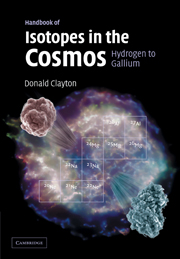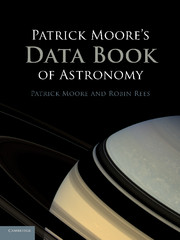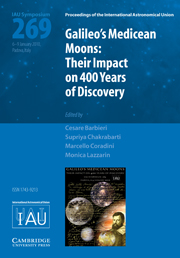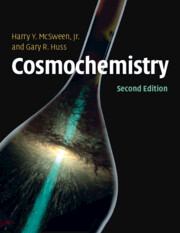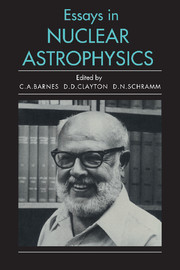Handbook of Isotopes in the Cosmos
Each naturally occurring isotope has a tale to tell about the history of matter, and each has its own special place in cosmic evolution. This volume aims to grasp the origins of our material world by looking at the abundance of the elements and their isotopes, and how this is interpreted within the theory of nucleosynthesis. Each isotope of elements from Hydrogen to Gallium is covered in detail. For each, there is an historical and chemical introduction, and a table of those isotopes that are abundant in the natural world. Information given on each isotope includes its nuclear properties, solar system abundance, nucleosynthesis in stars, astronomical observations, and isotopic anomalies in premolar grains and solar-system solids. The book is suitable for astronomers, physicists, chemists, geologists and planetary scientists, and contains a glossary of essential technical terms.
- A readable companion to the isotopes, and their place in the cosmos
- Written by a leading authority in the field
- Accessible to scientists from a range of disciplines, from astronomy to geology
Reviews & endorsements
'Clayton writes that he wants his readers to open the book at any point and be able to read of a wondrous world. I tested this theory exhaustively, and it works. I was charmed.' Chemistry World
'… a unique information resource for scientists.' Orion
Product details
August 2007Paperback
9780521530835
328 pages
244 × 170 × 17 mm
0.53kg
8 b/w illus. 30 tables
Available
Table of Contents
- List of illustrations
- Preface
- Introduction
- 1. Hydrogen (H)
- 2. Helium (He)
- 3. Lithium (Li)
- 4. Beryllium (Be)
- 5. Boron (B)
- 6. Carbon (C)
- 7. Nitrogen (N)
- 8. Oxygen (O)
- 9. Fluorine (F)
- 10. Neon (Ne)
- 11. Sodium (Na)
- 12. Magnesium (Mg)
- 13. Aluminium (Al)
- 14. Silicon (Si)
- 15. Phosphorous (P)
- 16. Sulphur (S)
- 17. Chlorine (Cl)
- 18. Argon (Ar)
- 19. Potassium (K)
- 20. Calcium (Ca)
- 21. Scandium (Sc)
- 22. Titanium (Ti)
- 23. Vanadium (V)
- 24. Chromium (Cr)
- 25. Manganese (Mn)
- 26. Iron (Fe)
- 27. Cobalt (Co)
- 28. Nickel (Ni)
- 29. Copper (Cu)
- 30. Zinc (Zn)
- 31. Gallium (Ga)
- Glossary.

